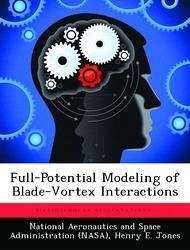A study of the full-potential modeling of a blade-vortex interaction was made. A primary goal of this study was to investigate the effectiveness of the various methods of modeling the vortex. The model problem restricts the interaction to that of an infinite wing with an infinite line vortex moving parallel to its leading edge. This problem provides a convenient testing ground for the various methods of modeling the vortex while retaining the essential physics of the full three-dimensional interaction. A full-potential algorithm specifically tailored to solve the blade-vortex interaction (BVI) was developed to solve this problem. The basic algorithm was modified to include the effect of a vortex passing near the airfoil. Four different methods of modeling the vortex were used: (1) the angle-of-attack method, (2) the lifting-surface method, (3) the branch-cut method, and (4) the split-potential method. A side-by-side comparison of the four models was conducted. These comparisons included comparing generated velocity fields, a subcritical interaction, and a critical interaction. The subcritical and critical interactions are compared with experimentally generated results. The split-potential model was used to make a survey of some of the more critical parameters which affect the BVI.
Hinweis: Dieser Artikel kann nur an eine deutsche Lieferadresse ausgeliefert werden.
Hinweis: Dieser Artikel kann nur an eine deutsche Lieferadresse ausgeliefert werden.








